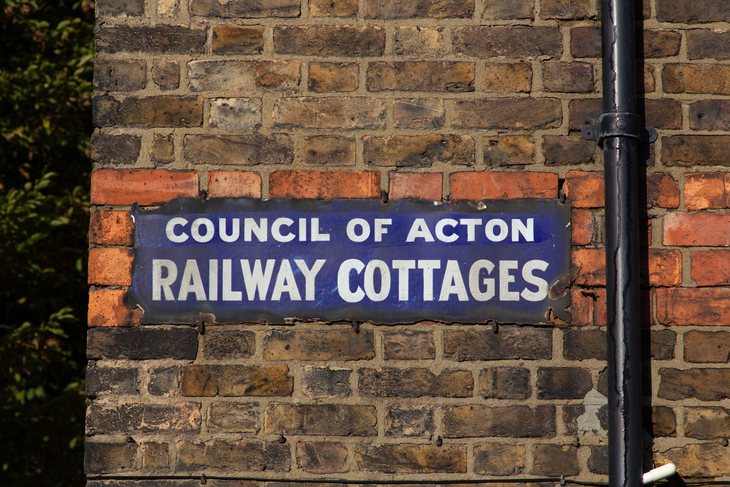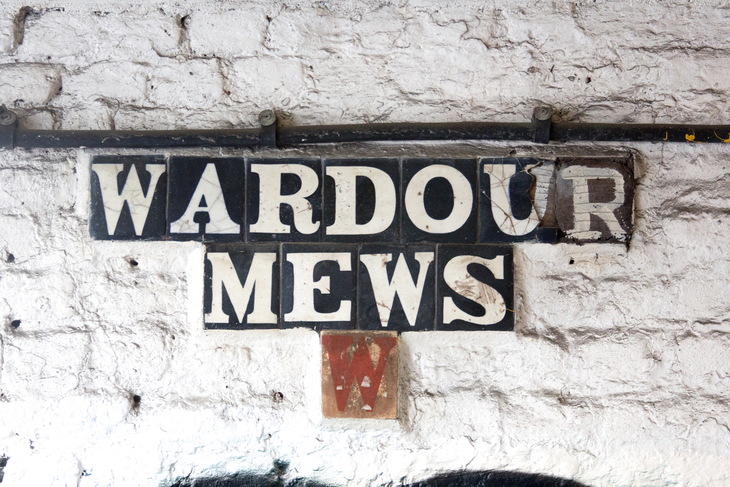Will Noble
In Pictures: The Mind-Boggling Variety Of London Street Signs
Abbey Road NW8. One of the most famous street signs in the world, let alone London. The Abbey Road signs outside the famous recoding studios in north London go through a perpetual cycle of being graffitied by fans of the Beatles and other bands, and then cleaned. © Alistair Hall
Every street in London has a story to tell — and that goes way beyond the name of the street.
Photographer Alistair Hall spent four years — and took around 4,000 photos of street signs — across the city, documenting everything from types of font, to materials uses, to plaque shapes.
Benham’s Place 1813. A fine cornerstone on a terrace of nine Grade II listed houses in Hampstead, just off Holly Walk. A rather curious combination of Roman and italic. William Benham was a grocer and cheesemonger on Hampstead High Street. © Alistair Hall
The result is a fascinating compendium of these nameplates called London Street Signs , showing off the panoply of designs through the decades and centuries, and telling some of the stories behind them.
Railway Cottages NW10. This street and its houses were built in 1889 by the London and North Western Railway for its employees. Acton became an Urban District in 1894, a Municipal Borough in 1921, and then became part of the London Borough of Ealing in 1965. © Alistair Hall
Some of these stories are even evident in the signs themselves: on one sign for Holly Heath in Hampstead, the sign-maker was apparently short on Es, and used Fs instead.
Draycott Avenue SW3. A recently restored nameplate from the old Metropolitan Borough of Chelsea, and with an unnumbered postal district, which dates the sign to between 1900 and 1917. There’s so much good stuff going on here – the serif borough name, the condensed sans serif street name, the contraction for Avenue, and the dynamic italic postal district. Kensington and Chelsea’s Streetscape Guide has this to say about their old street nameplates: ‘To add a sense of historic continuity, where older signs survive, they are retained and restored rather than being replaced.’ © Alistair Hall
Another sign on Wardour Mews, Soho has been touched up with a lick of paint, to keep the U and R visible.
Holly Hill NW3. A shortage of ‘E’s here means that two ‘F’s have been used instead on the direction to West Heath Road. The overall setting suggests that the ‘3’ was added to the postal district at a later date.© Alistair Hall
There's also a sign bearing the NE postcode, which was stripped from London and awarded to Newcastle in 1866.
Woodside Lane N12. One of a series of ornate cast iron nameplates around Finchley. This one features ‘Leading to …’ information. The leaf decoration at the ends of the signs is known as an anthemion or palmette. There is a cluster of equally ornate nameplates in nearby NW11. A similar style of cast iron nameplate can also be seen in Birmingham. © Alistair Hall
Prince of Wales Road NW5 A nameplate is on the outside of The Fiddlers in Kentish Town. The building dates from 1845, so it’s possible the nameplate has been in place for nearly all the building’s life. The Fiddlers used to be the Mother Shipton Tavern (which traded from at least 1899). Note the curve on the leg of the ‘R’, and the sharp mid-point of the ‘W’. © Alistair Hall
Jeffreys Road SW4. One of the original Lambeth nameplates, featuring carefully spaced Albertus for the street name, and a small postal district set in Gill Sans. The green border is unique to the Stockwell Cross area. © Alistair Hall
Wardour Mews W1. Part of the ‘U’ and the whole of the ‘R’ have been lost, but some enterprising soul has attempted to fix things up with a little paint.
You can check out more of Alistair's photos, by visiting his website and Instagram: @LondonStreetNameplates .
Martello Street E8, formerly Tower Street N.E. The top sign dates from between 1938 (when the street was renamed) and 1965 (when the Metropolitan Borough of Hackney ceased to exist). The lower sign features the N.E. postal district which was officially merged into the E. district in 1866. © Alistair Hall
Streets of London by Alistair Hall, published by Batsford, is available to buy now , RRP £14.99.















